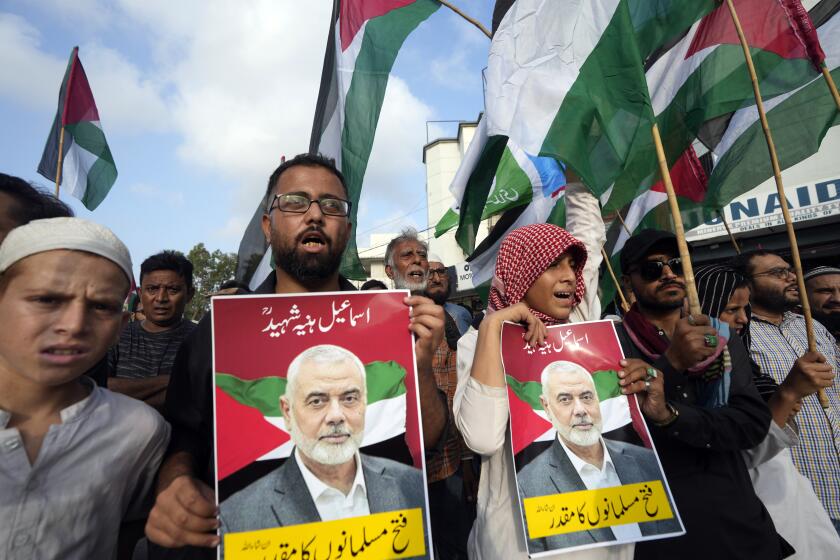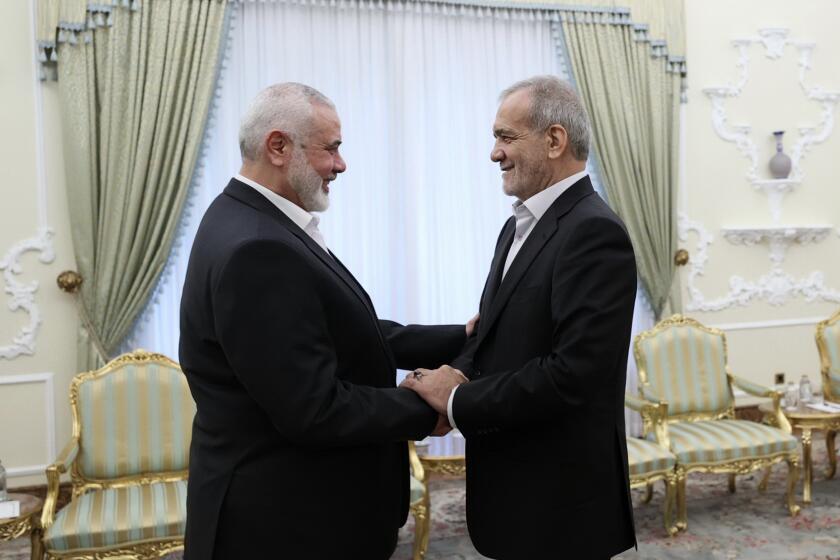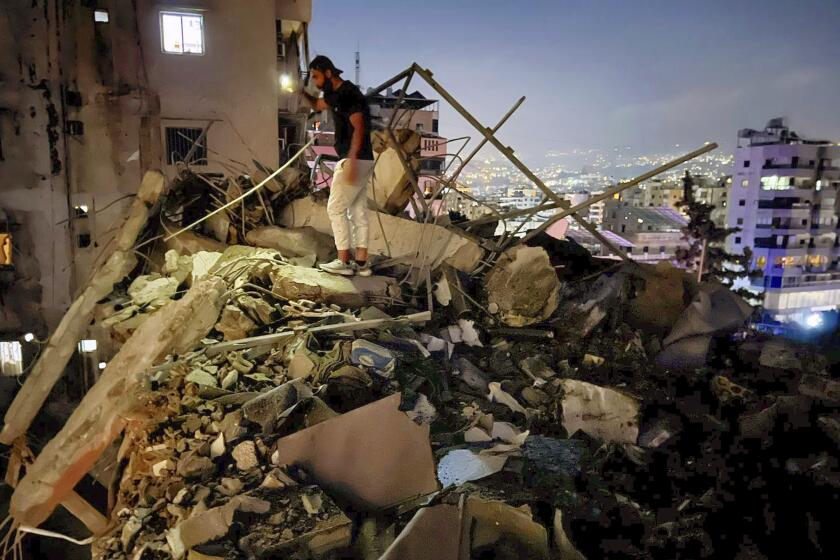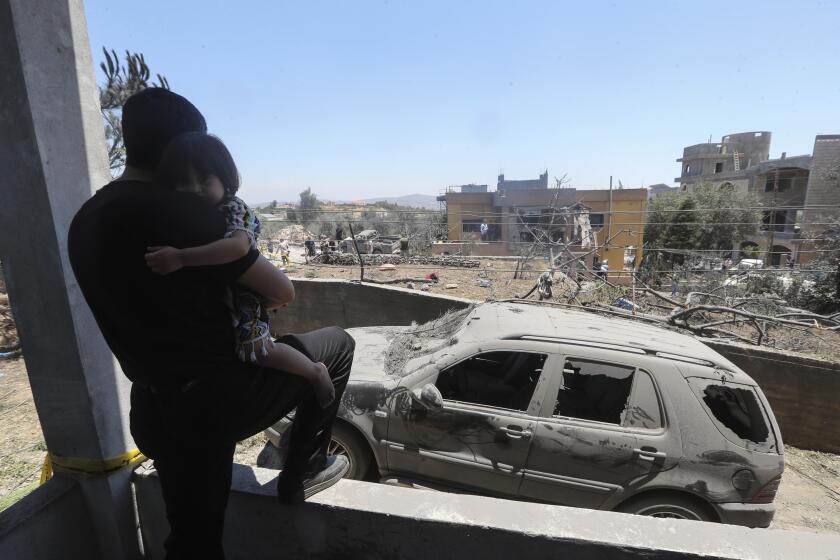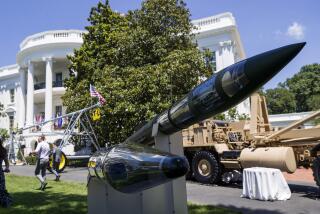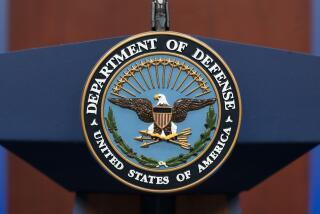U.S. to boost military presence in Middle East, sending fighter jet squadron
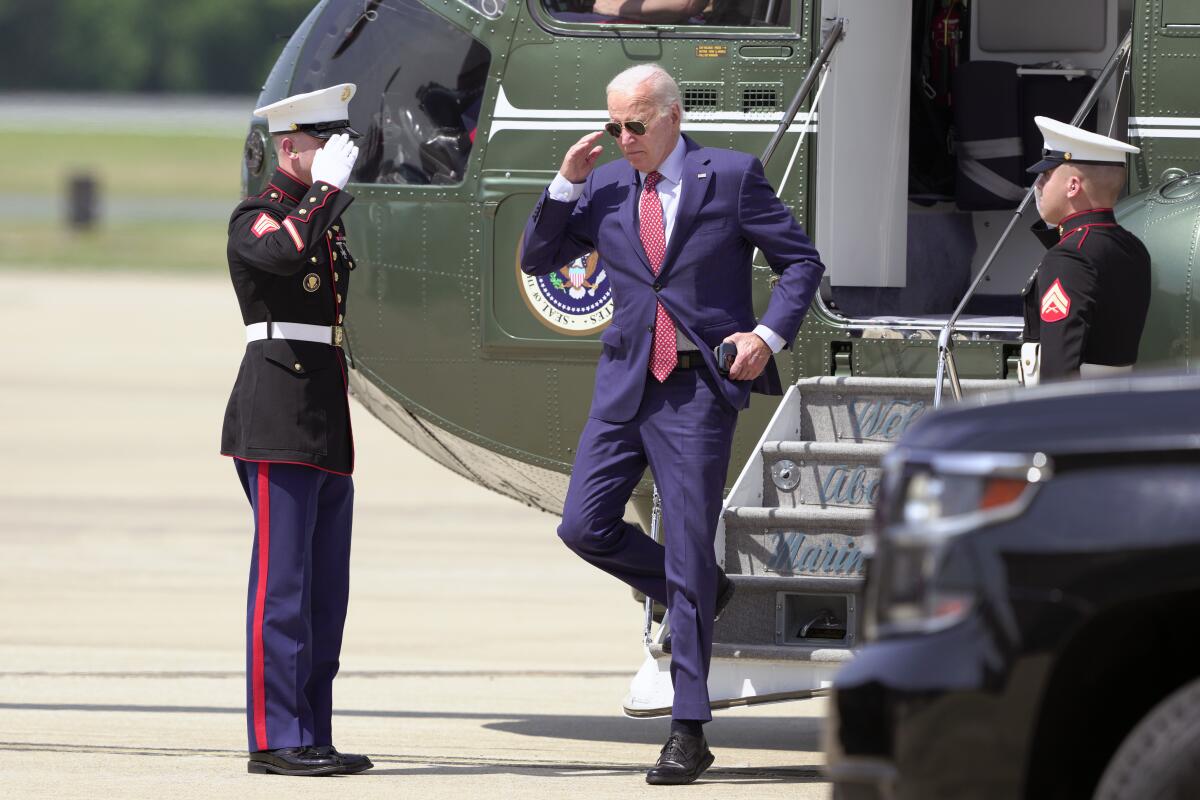
WASHINGTON — The U.S. will move a fighter jet squadron to the Middle East and maintain an aircraft carrier in the region, the Pentagon has said, beefing up the American military presence to help defend Israel from possible attacks by Iran and its proxies and safeguard U.S. troops.
Defense Secretary Lloyd J. Austin III has also ordered additional ballistic-missile-defense-capable cruisers and destroyers to the European and Middle East regions and is taking steps to send more land-based ballistic missile defense weapons there, the Pentagon said in a statement Friday evening.
The shifts make good on a promise President Biden made to Israeli Prime Minister Benjamin Netanyahu. In a call Thursday afternoon, Biden discussed new U.S. military deployments to protect against possible attacks from ballistic missiles and drones, according to the White House. In April, U.S. forces intercepted dozens of missiles and drones fired by Iran against Israel and helped down nearly all of them.
U.S. leaders worry about escalating violence in the Middle East in response to recent attacks by Israel on leaders of the Hamas and Hezbollah militant groups, which triggered threats of retaliation. Iran also has threatened to respond after Hamas leader Ismail Haniyeh was assassinated in Tehran on Wednesday, a day after senior Hezbollah commander Fuad Shukr was killed in Beirut.
Hamas political leader Ismail Haniyeh was a key figure in negotiations to end Israel-Hamas war. How will the U.S. react?
Israel has vowed to kill Hamas leaders over the group’s deadly Oct. 7 attack in southern Israel, which sparked the war in Gaza.
Austin is ordering the USS Abraham Lincoln aircraft carrier strike group to the Middle East to replace the USS Theodore Roosevelt carrier strike group, which is in the Gulf of Oman but scheduled to come home this summer. That decision suggests the Pentagon has decided to keep a carrier consistently in the region as a deterrent against Iran at least until next year.
Hamas leader Ismail Haniyeh was assassinated in Iran after attending the inauguration of the country’s new president, Iran and the militant group said early Wednesday. Hamas blamed an Israeli airstrike.
The Pentagon did not say where the fighter jet squadron was coming from or where it would be based in the Middle East. A number of allies in the region are often willing to host U.S. military forces but don’t want it made public.
The Pentagon has options to provide additional land-based ballistic missile defense, such as the Patriot or the Terminal High Altitude Area Defense, known as THAAD, both of which launch interceptor missiles from specialized trailer-based mobile launching systems. The Pentagon did not identify what system it would be deploying to augment defenses in the region.
The White House in a statement said that Biden “reaffirmed his commitment to Israel’s security against all threats from Iran, including its proxy terrorist groups Hamas, Hezbollah and the Houthis,” the latter referring to the Houthi militant group in Yemen.
Israel launched an airstrike targeting a senior Hezbollah commander it said was responsible for a rocket attack over the weekend.
Israel has assassinated two dozen Hezbollah commanders in Lebanon since last fall amid an intelligence war employing cellphones, drones and fake rocks.
Earlier Friday, Sabrina Singh, Pentagon spokeswoman, told reporters that moves were in the works. She said Austin “will be directing multiple” force movements to provide additional support to Israel and increase protection for U.S. troops in the region.
Pentagon and other military officials have been considering a wide array of options, including additional ships and fighter aircraft squadrons, and added air defense systems or unmanned weapons. In many cases the U.S. does not provide details because host nations are sensitive about the presence of additional U.S. forces and don’t want those movements made public.
It’s unclear what new ships would move to the Middle East.
The U.S. has had a consistent warship presence there and in the eastern Mediterranean Sea, including two Navy destroyers, the Roosevelt and the USS Bulkeley, as well as the USS Wasp and the USS New York. The Wasp and the New York are part of the amphibious ready group and carry a Marine expeditionary unit that could be used if any evacuation of U.S. personnel is required.
In addition, a U.S. official said two U.S Navy destroyers now in the Middle East will be heading north up the Red Sea toward the Mediterranean Sea. At least one of those could linger in the Mediterranean if needed. The official spoke on condition of anonymity to discuss troop movements.
Baldor and Copp write for the Associated Press.
More to Read
Sign up for Essential California
The most important California stories and recommendations in your inbox every morning.
You may occasionally receive promotional content from the Los Angeles Times.
